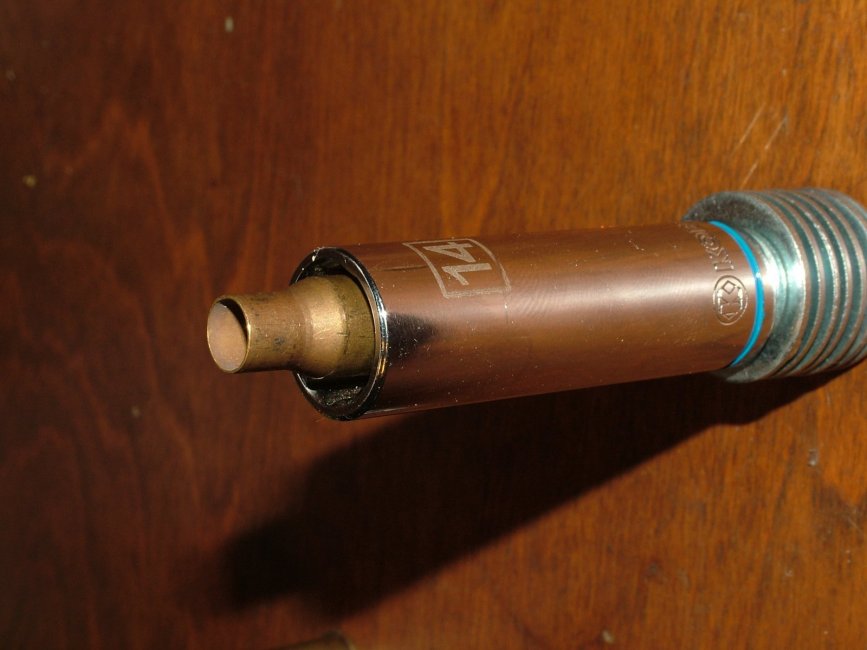BFMIN
Ultimate Member
I recently annealed a batch of bottleneck R-P .303 British cases I'd been gifted with. They're listed as "once fired".
As part of brass prep I annealed them using my normal tools techniques & times.
The cases were in a deep well socket spun continuously by an electric screwdriver.
I heated over a low propane flame for 7 seconds, & verified temps with a Templistick 450℉ . I do normally drop them into cold water in the S/S bowl, I know its not needed to anneal Brass, but I usually do large batches for consistency, & don't want random heat transfer occurring in the mound of constantly replenished hot @ one end & cold @ the other brass. This was a small batch (40 Pcs) so I didn't use water. This was my ONLY change.
I've used this for years with never a problem.
The chase necks/mouths are so soft the case chamfering / deburring cutter is deforming the case mouths!
Am I over reacting or did I just wreck a batch of cases? I have never had this issue before!
As part of brass prep I annealed them using my normal tools techniques & times.
The cases were in a deep well socket spun continuously by an electric screwdriver.
I heated over a low propane flame for 7 seconds, & verified temps with a Templistick 450℉ . I do normally drop them into cold water in the S/S bowl, I know its not needed to anneal Brass, but I usually do large batches for consistency, & don't want random heat transfer occurring in the mound of constantly replenished hot @ one end & cold @ the other brass. This was a small batch (40 Pcs) so I didn't use water. This was my ONLY change.
I've used this for years with never a problem.
The chase necks/mouths are so soft the case chamfering / deburring cutter is deforming the case mouths!
Am I over reacting or did I just wreck a batch of cases? I have never had this issue before!




